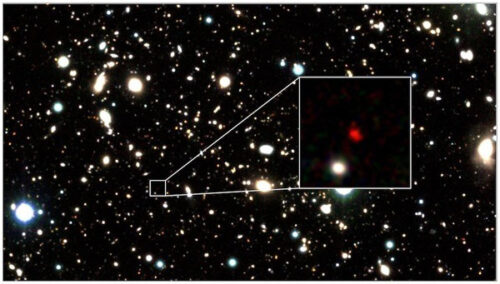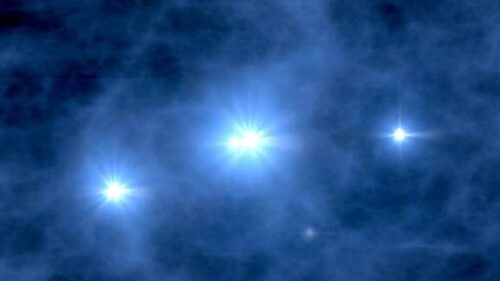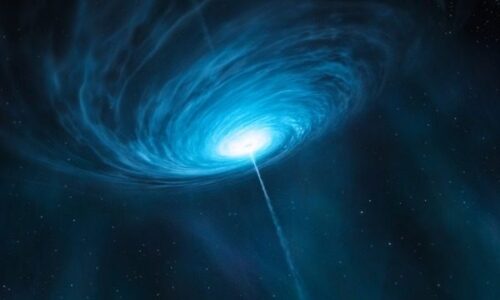
In a groundbreaking discovery, astronomers have identified the most distant galaxy known to date.
Named HD1, this extraordinary cosmic object is not only located a staggering 13.5 billion light-years away but also exhibits an unusually bright ultraviolet glow.
HD1’s existence can be traced back to a mere 330 million years after the Big Bang, making it a window into the early stages of the universe.
This galaxy might also hold another cosmic record, potentially harboring either Population III stars or the earliest supermassive black hole ever found.
The remarkable findings of this discovery have been published in two scientific papers, released in April 2023, in esteemed journals—The Astrophysical Journal and the Monthly Notices of the Royal Astronomical Society Letters (MNRAS).
The research team, led by astronomer Fabio Pacucci, discovered HD1’s extraordinary brightness in ultraviolet light, which typically indicates a galaxy’s high star formation rate.

However, the number of stars HD1 would need to produce annually to account for its brightness far exceeded expectations, leading scientists to explore alternative explanations.
One possibility considered by the researchers is that HD1’s ultraviolet radiance is the result of the galaxy producing stars that differ from those found in modern galaxies.
In the early universe, stars were formed from primordial gas consisting solely of hydrogen, helium, and trace amounts of lithium and beryllium.
These early stars, known as Population III stars, were more massive, luminous, and hotter than their modern counterparts.
They burned out within a few million years, living fast and dying young. While direct evidence of Population III stars remains elusive, the recent discovery of the earliest star, Earendel, provides hope for further exploration.

Analyzing Earendel’s composition, which is expected to be primarily hydrogen and helium, could shed light on the existence of Population III stars.
Apart from Population III stars, another explanation for HD1’s ultraviolet brightness could lie in the presence of a supermassive black hole.
If this hypothesis holds true, it would make the black hole the earliest known of its kind, surpassing the previous record by approximately 500 million years.
Although supermassive black holes are believed to reside at the centers of most galaxies, understanding how they grew to such enormous sizes during the early universe remains a mystery.
According to current physics theories, black holes require significant time to accumulate enough matter to become supermassive.
Therefore, astronomers did not expect to observe them at such early cosmic stages. However, recent observations have revealed the presence of supermassive black holes within the earliest galaxies.
The infalling matter surrounding these black holes emits intense radiation, making it possible to detect these galaxies despite their extreme distances.
In HD1’s case, high-energy photons from the swirling infalling material could account for its ultraviolet brightness.

To make this groundbreaking discovery, the research team dedicated over 1,200 hours of observation using advanced telescopes such as the Subaru Telescope, VISTA Telescope, UK Infrared Telescope, and Spitzer Space Telescope.
Confirming HD1’s distance required extensive observation, and the team plans to revisit the galaxy using NASA’s highly anticipated James Webb Space Telescope (JWST).
The JWST’s exceptional capabilities will allow scientists to peer into the universe’s earliest moments, observing the first luminous glows that emerged after the Big Bang.
Furthermore, it may help determine whether HD1’s ultraviolet brightness is attributed to Population III stars or a supermassive black hole.
Additionally, the JWST might unveil even more distant galaxies, providing further insights into the earliest stages of the cosmos.
The discovery of HD1, the most distant galaxy ever detected, represents a significant milestone in our understanding of the universe’s evolution.
By shedding light on the early universe’s phenomena, such as Population III stars and supermassive black holes, astronomers continue to push the boundaries of scientific knowledge.
As technology advances and new telescopes come into play, we can anticipate further astonishing discoveries that will reshape our comprehension of the cosmos.
